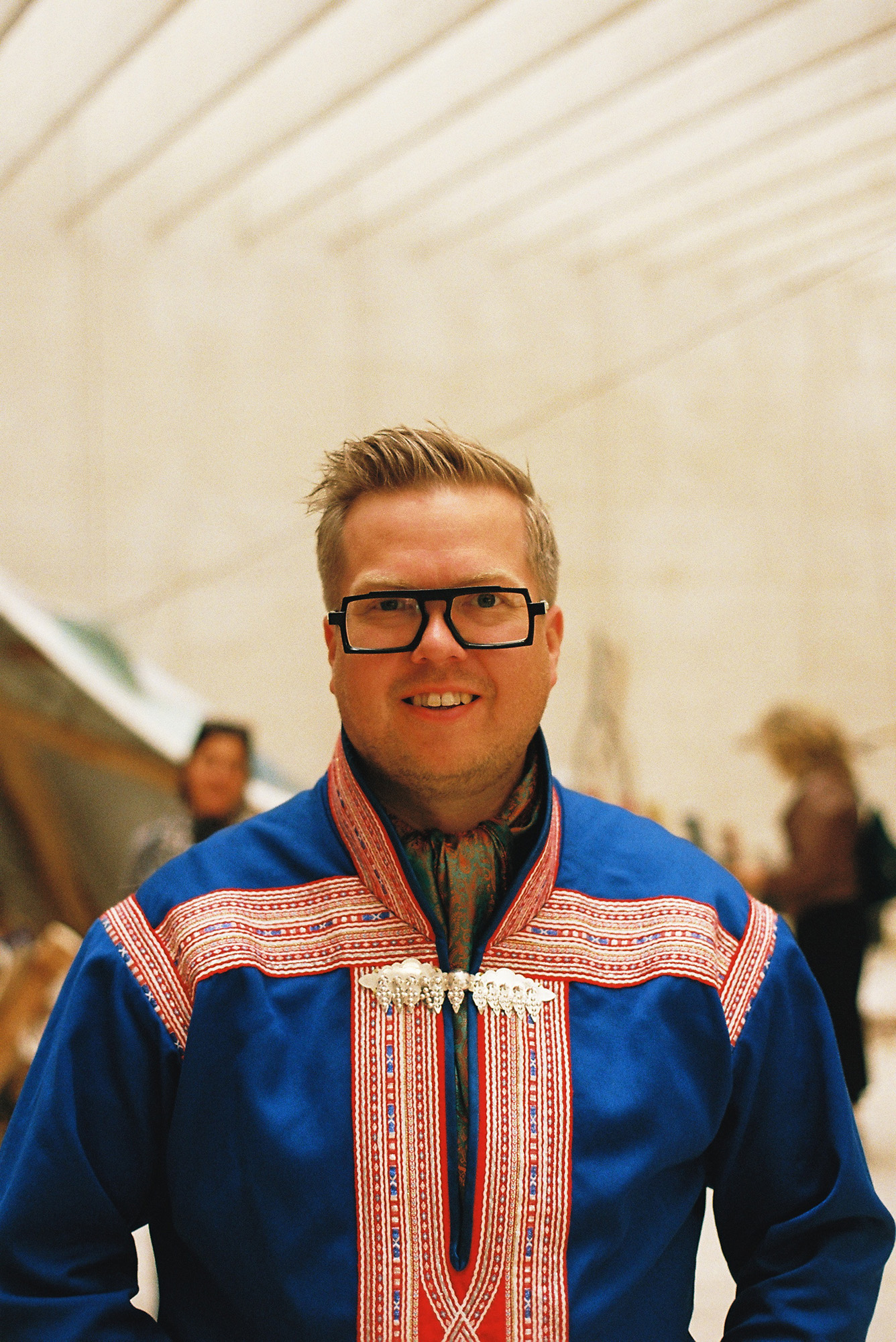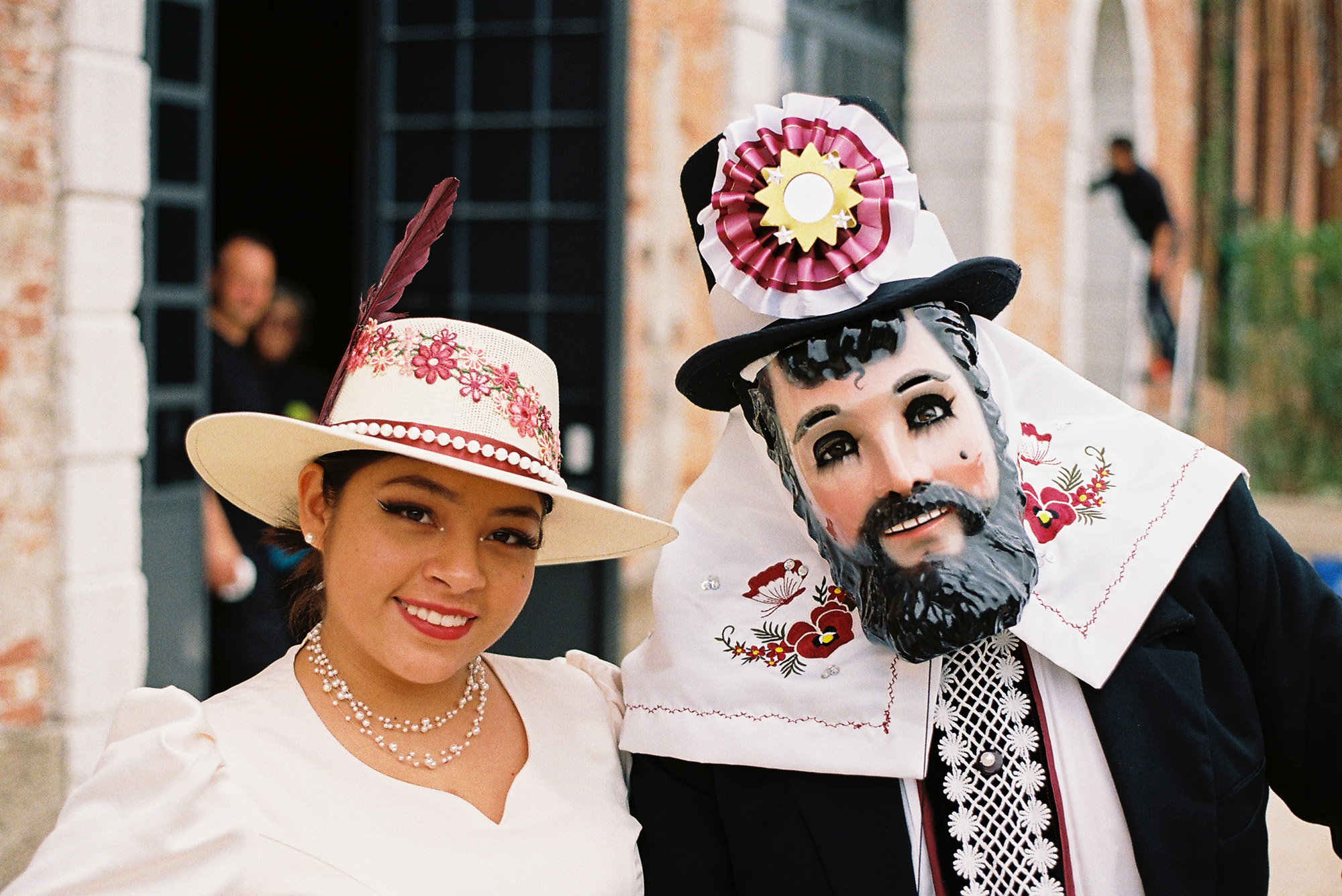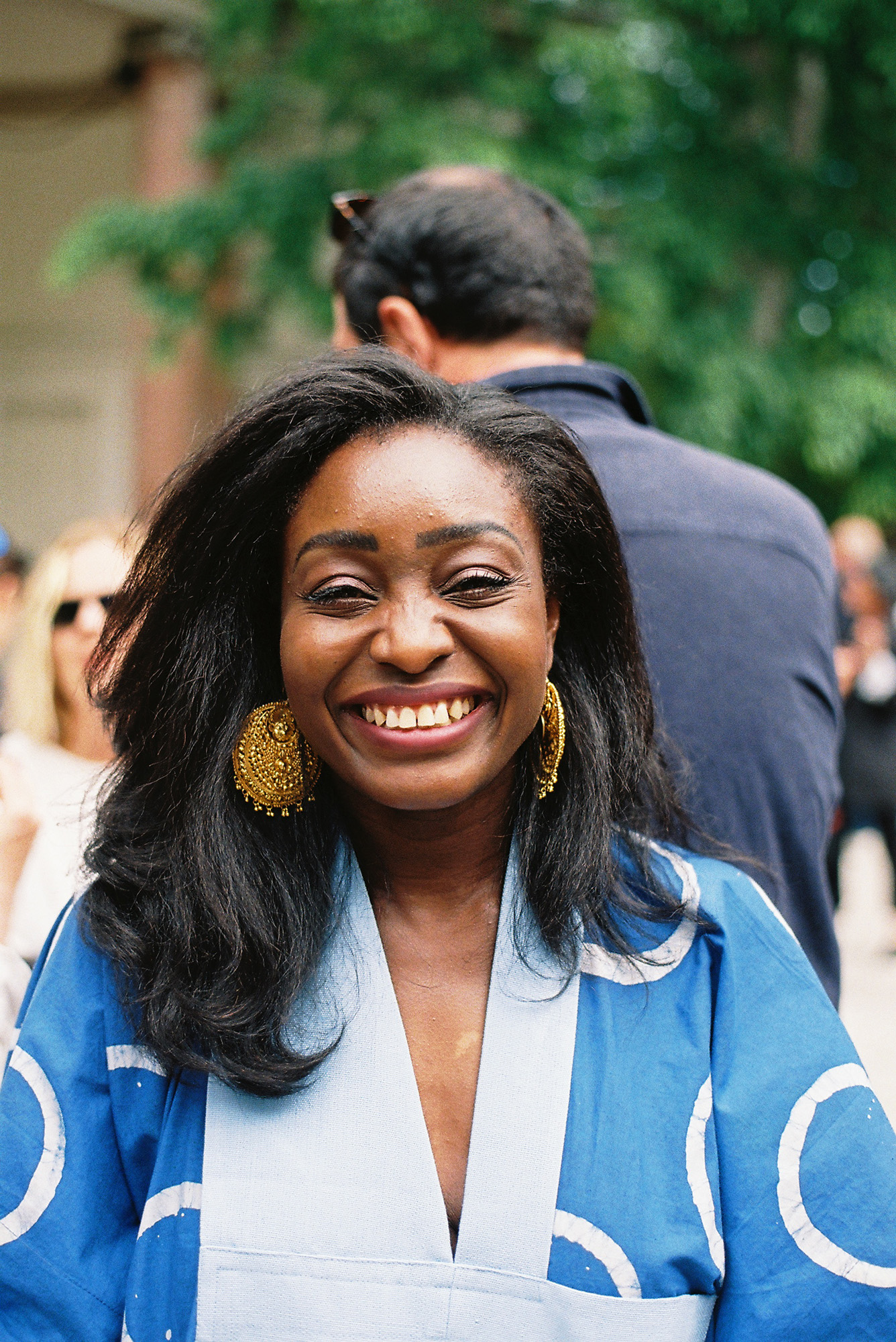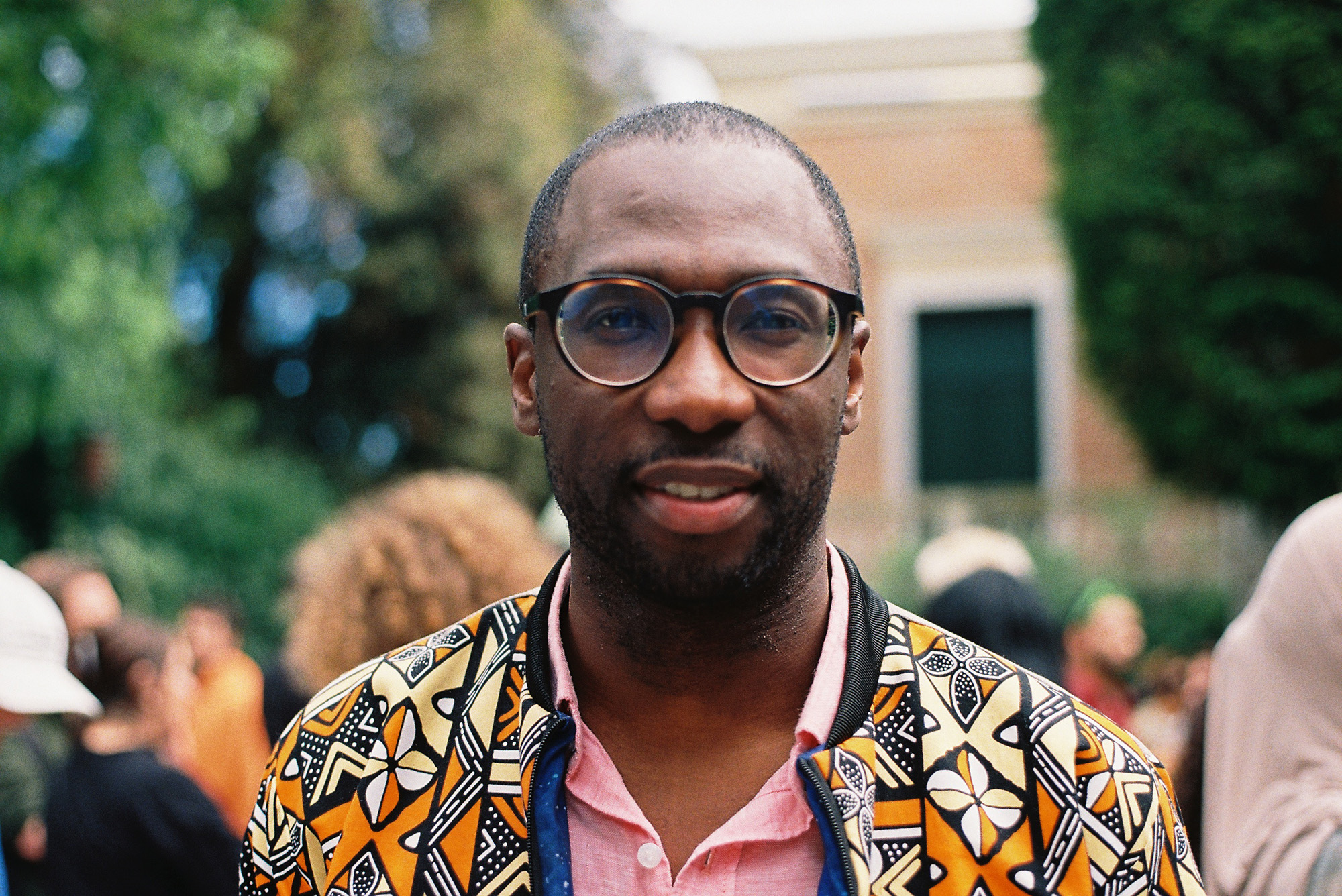Venice Architecture Biennale: the people & the purpose
The Venice Architecture Biennale is all about display - showing the world the newest buildings, ideas & artistic representations to explore everything built environment. But this year, Rob Fiehn discovers that amongst the big installations it is people & a new generation of voices & ideas that take centre stage.
The Venice Architecture
Biennale is a curious thing when compared to its arty counterpart. Rather than
acting as a showcase for creativity, it also tasks itself with asking urgent
questions about the role of the built environment within society and some even
go so far as to suggest that it should provide tangible solutions that could be
enacted. It is interesting to consider if the biennale has a social purpose and
what that means for the type of curation that results.
This year’s edition appears to have divided critics and visitors like none before. We shouldn’t be surprised, because the curator, Lesley Lokko, was clear about her agenda to shake-up the Eurocentric viewpoint of the profession and its attempts to tackle global issues. Lokko themed her event under the umbrella title of The Laboratory of the Future and asked “What does it mean to be ‘an agent of change’?” She shifted the focus onto Africa and the African Diaspora, which was clear at preview days of the event, with a much greater balance into terms of diversity, including participants from non-white backgrounds and an improved gender parity. The average age of those taking part dropped from 43 to 37 and the representation of architecture moved from traditional modes of photography, models, and endless wall text to sculpture, films, and performance.
![]()
![]()
figs.i,ii
This change in presentation style did not go unnoticed and it was widely praised by some newspaper critics, calling it a “departure point” (Observer), “tactile, seductive and unsettling” (Guardian), and “brave, baffling, stimulating and essential” (Financial Times). However, the commentary on the biennale was not all positive. Patrik Schumacher, the Principal of Zaha Hadid Architects, took to Facebook to condemn the festival as “generating confusion and disappointment” and a “self-annihilation of the profession” in a comment which garnered a host of articles across the architectural media. A critic at Unherd suggested that architects had “crumbled in the face populism” and that the biennale itself was “performative emptiness.”
It is important to note that all of the above opinions, whether positive or negative, come from a white male perspective. It was refreshing to hear from Ewa Effiom, Krish Nathaniel, and Aoi Phillips in Dezeen celebrating the fact that "the usual champagne-socialist pomposity of Venice has been drowned out by a newfound openness,” also arguing that “Lokko's biennale is far from anti-architectural.” In his review of the British pavilion, Derin Fadina points to “new ways of thinking about architecture beyond buildings” while Debika Ray in the Financial Times heralds the show as “a way of exploring hybridity, the merging of identities and cultures.”
![]()
![]()
figs.iii,iv
There also seems to be a disconnect between how older architects felt about this departure of traditional modes of representation and the next generation, who are more in tune with the ways that people consume cultural output. I am old enough to remember a time when architecture was largely depicted as empty voids. Photographers and filmmakers were briefed to capture the shape of a structure, look at how light entered the space, and showcase the textures of different materials. That has started to shift in recent times as humans have actually started to populate images of the buildings that were meant for them. A recent RIBA exhibition, The Architect Has Left The Building by Jim Stephenson (see 00100), actually eschews the normal documentation of a new shiny project and instead focuses on its everyday use, with close-up views of activity in a small section of a building or public space.
Surely architecture has always been about the individuals and groups that use it? Buildings and structures are primarily designed for enclosure, to protect people from the elements and provide a safe haven, whether that’s for staying still or in transit from once place to another. Also, it shouldn’t be radical to suggest that the majority of audiences respond better to stories of other communities rather than a model of an urban masterplan, even if that is exactly the kind of thing that Schumacher believes is “expected by the silent majority of architects and I presume by the general public.” Architecture therefore becomes a lens to view the world and understand different lived experiences but built form is not the beginning and end of the story.
The biennale is about interactions and dialogue. The preview sees starchitects rubbing shoulders with small practitioners and even students, international curators catch-up with their contemporaries, while the proceedings are overseen by a coterie of journalists. This presents us with one of the largest built environment networking opportunities in the world – and would therefore seem like a huge chance to bring together experts and inspire positive change. At the same time as the opening week took place, UKREiiF (The UK’s Real Estate Investment and Infrastructure Forum) was happening in Leeds, billed as a groundbreaking new forum aiming to drive economic growth and inclusive investment across the UK. Public Practice’s Pooja Agrawal acknowledged on Twitter that while the two events are “two completely different worlds” she wished there was “more exchange between power/capital/policy and urgent/creative/critical spatial proposition” other both the artistically and commercially led projects.
![]()
![]()
figs.v,vi
Sadly, one of the low points of the Venice experience was the rare marriage of investment, development, and architecture. Although an interloper and not affiliated with official biennale itself, at Abbazia di San Gregorio, a NEOM exhibition showcased “Zero Gravity Urbanism” in the form of THE LINE, a proposed 170-kilometre-long city imagined to be only 200m wide but 500m high. Paul Finch,programme director of the World Architecture Festival, described it as “extraordinarily convincing” in his newsletter, while over on the Architects’ Journal architect Alpa Depani saw it as anti-architecture and “a multibillion petrodollar investment vehicle, an unpleasant, oily stain of a spectacle; one that taints all those that touch it too.” Here we saw grand models describing even grander visions in the traditional view of the future as a floating city, with impossible greenery and sci-fi transport.
In the Observer newspaper, Rowan Moore suggested that La Biennale di Venezia has historically been a “Eurovision of the visual.” I’m not sure if this should be taken as an insult or praise. Eurovision (see 00097) is high camp but also represents nations coming together to celebrate and share pleasure in equal measure. It is a competition but the stakes are not high, so the energy remains buoyant.
Seeing the increased enthusiasm from a younger crowd at the 2023 edition of this architectural cause célèbre gave me hope. Participants and visitors were not asking for change, they were demanding it. Watching and photographing the broad array of people in attendance made me realise that architecture is undoubtedly about those it serves, rather than the oversized and over-engineered icons of the past. It’s been clear for some time that the old-guard was going to be replaced but who knew it would happen so loudly and with such urgency?
![]()
This year’s edition appears to have divided critics and visitors like none before. We shouldn’t be surprised, because the curator, Lesley Lokko, was clear about her agenda to shake-up the Eurocentric viewpoint of the profession and its attempts to tackle global issues. Lokko themed her event under the umbrella title of The Laboratory of the Future and asked “What does it mean to be ‘an agent of change’?” She shifted the focus onto Africa and the African Diaspora, which was clear at preview days of the event, with a much greater balance into terms of diversity, including participants from non-white backgrounds and an improved gender parity. The average age of those taking part dropped from 43 to 37 and the representation of architecture moved from traditional modes of photography, models, and endless wall text to sculpture, films, and performance.


figs.i,ii
This change in presentation style did not go unnoticed and it was widely praised by some newspaper critics, calling it a “departure point” (Observer), “tactile, seductive and unsettling” (Guardian), and “brave, baffling, stimulating and essential” (Financial Times). However, the commentary on the biennale was not all positive. Patrik Schumacher, the Principal of Zaha Hadid Architects, took to Facebook to condemn the festival as “generating confusion and disappointment” and a “self-annihilation of the profession” in a comment which garnered a host of articles across the architectural media. A critic at Unherd suggested that architects had “crumbled in the face populism” and that the biennale itself was “performative emptiness.”
It is important to note that all of the above opinions, whether positive or negative, come from a white male perspective. It was refreshing to hear from Ewa Effiom, Krish Nathaniel, and Aoi Phillips in Dezeen celebrating the fact that "the usual champagne-socialist pomposity of Venice has been drowned out by a newfound openness,” also arguing that “Lokko's biennale is far from anti-architectural.” In his review of the British pavilion, Derin Fadina points to “new ways of thinking about architecture beyond buildings” while Debika Ray in the Financial Times heralds the show as “a way of exploring hybridity, the merging of identities and cultures.”


figs.iii,iv
There also seems to be a disconnect between how older architects felt about this departure of traditional modes of representation and the next generation, who are more in tune with the ways that people consume cultural output. I am old enough to remember a time when architecture was largely depicted as empty voids. Photographers and filmmakers were briefed to capture the shape of a structure, look at how light entered the space, and showcase the textures of different materials. That has started to shift in recent times as humans have actually started to populate images of the buildings that were meant for them. A recent RIBA exhibition, The Architect Has Left The Building by Jim Stephenson (see 00100), actually eschews the normal documentation of a new shiny project and instead focuses on its everyday use, with close-up views of activity in a small section of a building or public space.
Surely architecture has always been about the individuals and groups that use it? Buildings and structures are primarily designed for enclosure, to protect people from the elements and provide a safe haven, whether that’s for staying still or in transit from once place to another. Also, it shouldn’t be radical to suggest that the majority of audiences respond better to stories of other communities rather than a model of an urban masterplan, even if that is exactly the kind of thing that Schumacher believes is “expected by the silent majority of architects and I presume by the general public.” Architecture therefore becomes a lens to view the world and understand different lived experiences but built form is not the beginning and end of the story.
The biennale is about interactions and dialogue. The preview sees starchitects rubbing shoulders with small practitioners and even students, international curators catch-up with their contemporaries, while the proceedings are overseen by a coterie of journalists. This presents us with one of the largest built environment networking opportunities in the world – and would therefore seem like a huge chance to bring together experts and inspire positive change. At the same time as the opening week took place, UKREiiF (The UK’s Real Estate Investment and Infrastructure Forum) was happening in Leeds, billed as a groundbreaking new forum aiming to drive economic growth and inclusive investment across the UK. Public Practice’s Pooja Agrawal acknowledged on Twitter that while the two events are “two completely different worlds” she wished there was “more exchange between power/capital/policy and urgent/creative/critical spatial proposition” other both the artistically and commercially led projects.


figs.v,vi
Sadly, one of the low points of the Venice experience was the rare marriage of investment, development, and architecture. Although an interloper and not affiliated with official biennale itself, at Abbazia di San Gregorio, a NEOM exhibition showcased “Zero Gravity Urbanism” in the form of THE LINE, a proposed 170-kilometre-long city imagined to be only 200m wide but 500m high. Paul Finch,programme director of the World Architecture Festival, described it as “extraordinarily convincing” in his newsletter, while over on the Architects’ Journal architect Alpa Depani saw it as anti-architecture and “a multibillion petrodollar investment vehicle, an unpleasant, oily stain of a spectacle; one that taints all those that touch it too.” Here we saw grand models describing even grander visions in the traditional view of the future as a floating city, with impossible greenery and sci-fi transport.
In the Observer newspaper, Rowan Moore suggested that La Biennale di Venezia has historically been a “Eurovision of the visual.” I’m not sure if this should be taken as an insult or praise. Eurovision (see 00097) is high camp but also represents nations coming together to celebrate and share pleasure in equal measure. It is a competition but the stakes are not high, so the energy remains buoyant.
Seeing the increased enthusiasm from a younger crowd at the 2023 edition of this architectural cause célèbre gave me hope. Participants and visitors were not asking for change, they were demanding it. Watching and photographing the broad array of people in attendance made me realise that architecture is undoubtedly about those it serves, rather than the oversized and over-engineered icons of the past. It’s been clear for some time that the old-guard was going to be replaced but who knew it would happen so loudly and with such urgency?

fig.vii
Rob Fiehn is a London-based communications consultant specialising in architecture and design. He is also chair of the Museum of Architecture, a London Society committee member and sits on the board of the Blackhorse Workshop in Walthamstow. Rob has edited a number of books, including the recent Collective Action!: The Power of Collaboration and Co-Design in Architecture, published by RIBA Books.
www.robertfiehn.com
visit
The Venice Biennale of Architecture: The Laboratory of the Future, is open until 26 November 2023. More details available at:
www.labiennale.org/en/architecture/2023
images
fig.i
A participant of the Nordic pavilion in traditional Sámi attire. © Rob Fiehn
fig.ii
Two Catrines de los Huehues Dancers outside the Mexico pavilion.
© Rob Fiehn
fig.iii
A performer at the Ball Theater in the French pavilion.
© Rob Fiehn
fig.iv
Architect Tara Gbolade.
© Rob Fiehn
fig.v
A representative of Canada's indigenous communities.
© Rob Fiehn
fig.vi
Architect Lanre Gbolade.
© Rob Fiehn
fig.vii
Educator Neil Pinder.
© Rob Fiehn
publication date
15 June 2023
tags
Pooja Agrawal, Africa, Change, Alpa Depani, Ewa Effiom, Derin Fadina, Rob Fiehn,
Lanre Gbolade,
Tara Gbolade,
Lesley Lokko, Rowan Moore, Krish Nathaniel, NEOM, People, Aoi Phillips, Neil Pinder, Patrik Schumacher, Jim Stephenson, The Line, Venice, Venice Architecture Biennale, Venice Biennale
www.labiennale.org/en/architecture/2023


